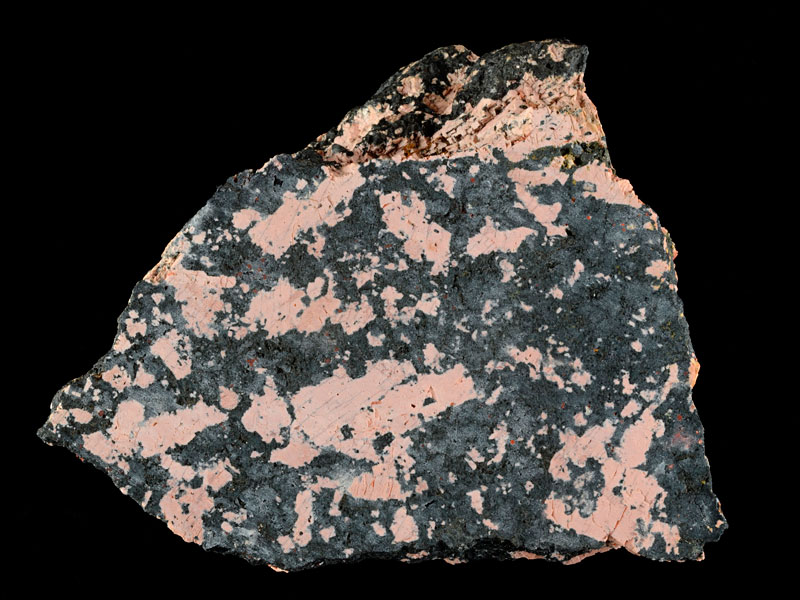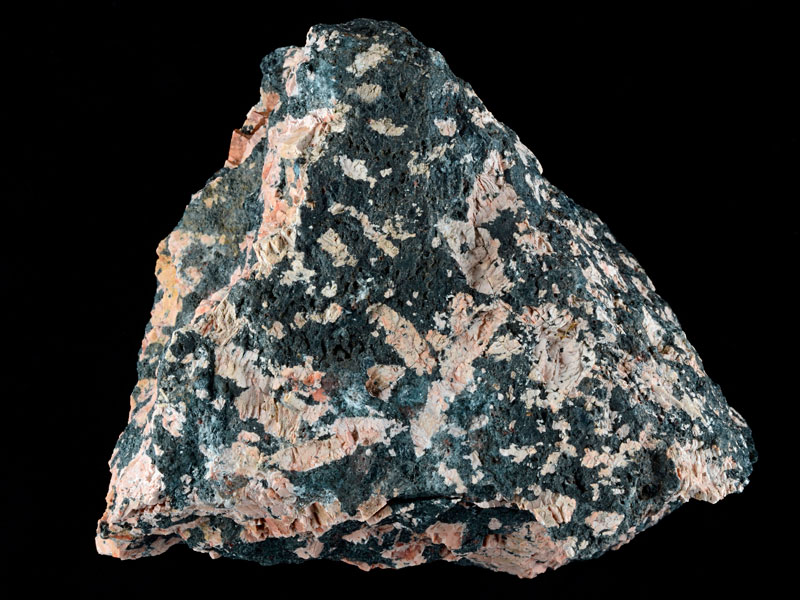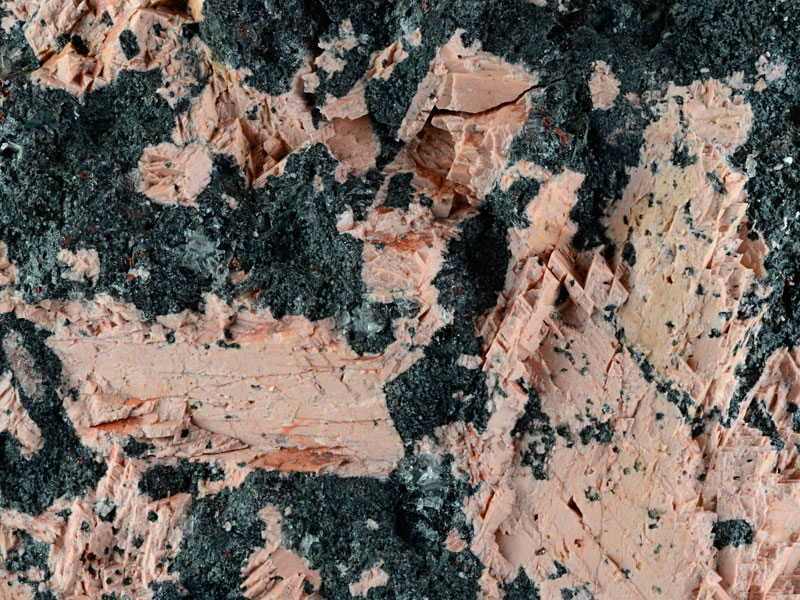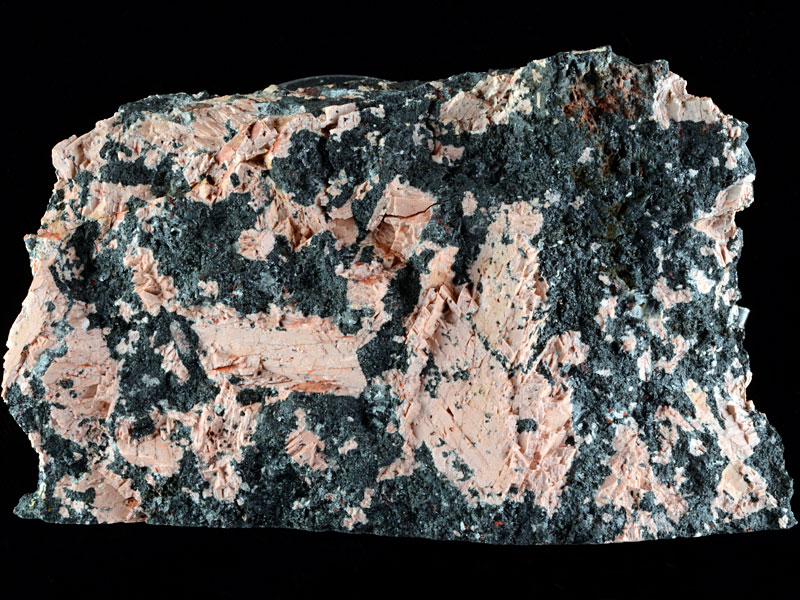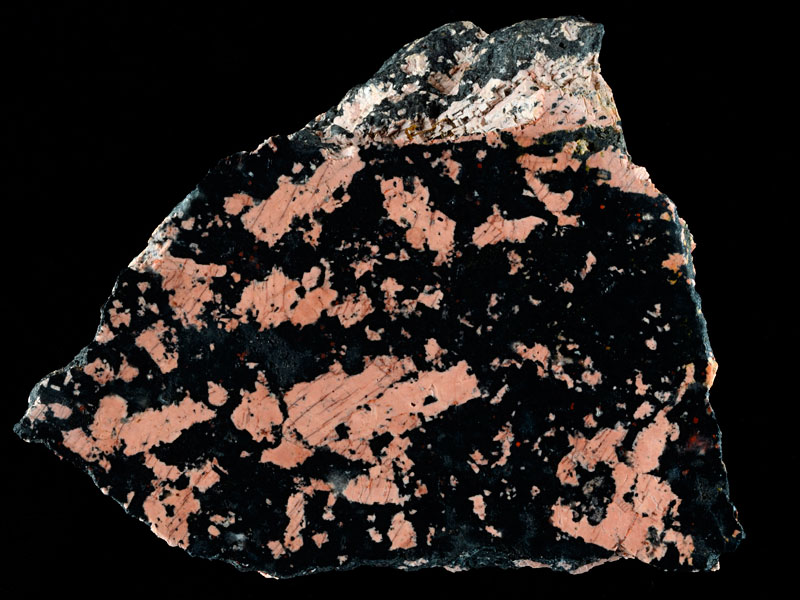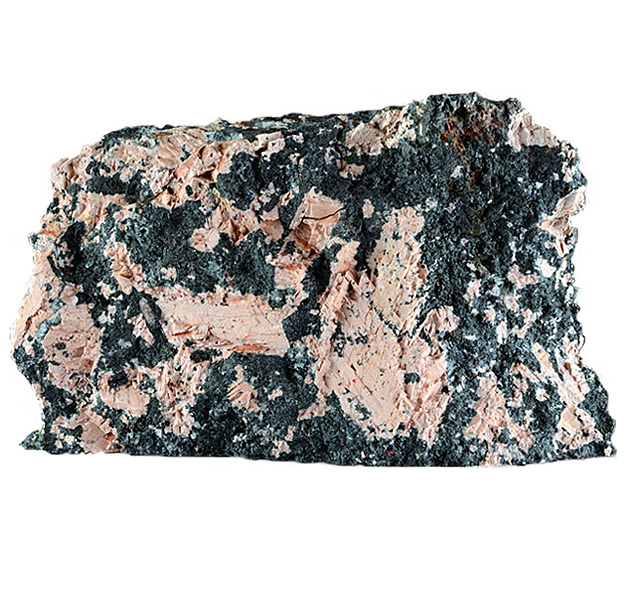
Fact sheet
Luxullianite is a rare type of tourmaline-rich granite named after the village of Luxulyan in Cornwall. Luxullianite is formed from boron-rich pegmatitic fluids caused by fractional crystallisation of the earlier biotite-rich St Austell granite complex, which formed around 280 million years ago by partial melting of the lower continental crust during the Variscan orogeny. In hand specimen the rock appears to consist of two main parts – striking salmon pink tabular feldspar shapes, and black tourmaline that appears to be infilling voids.
This sample of Luxullianite illustrates two phases of tourmaline crystallisation: an early blocky magmatic phase exhibiting characteristic tourmaline colours, and tourmaline radial sets of needles forming ‘suns’ that grew late in the formation of this rock. Crystallisation in cavities has allowed the rock to develop fine rosettes of acicular crystals with characteristic brown-blue-green pleochroism and vivid birefringence. Zircon and the tin ore mineral cassiterite complete the mineral assemblage.
The United Kingdom Virtual Microscope (UKVM) collection consists of igneous, sedimentary and metamorphic rocks from around the UK.
It is intended as a teaching resource, helping to tell the story of the common rock types and how they form, and reflecting the history of the UK at the margins of the continent of Europe. The collection is a series of teaching sets, for example igneous rocks from the North Atlantic Igneous Province and SW England; high-temperature metamorphic rocks from Scotland and low-temperature metamorphic rocks from Wales; and sedimentary rocks, including English limestones and sandstones.
